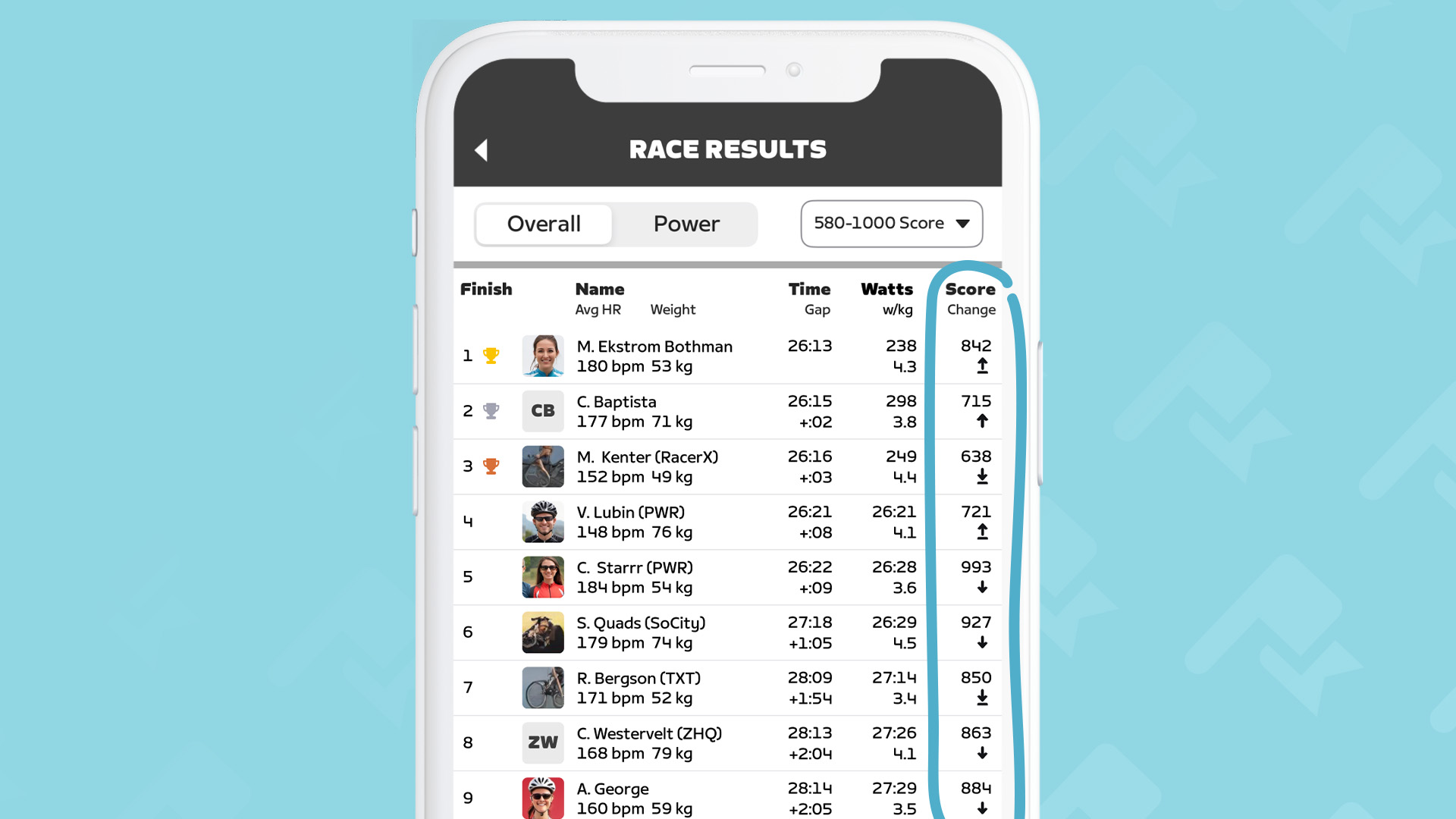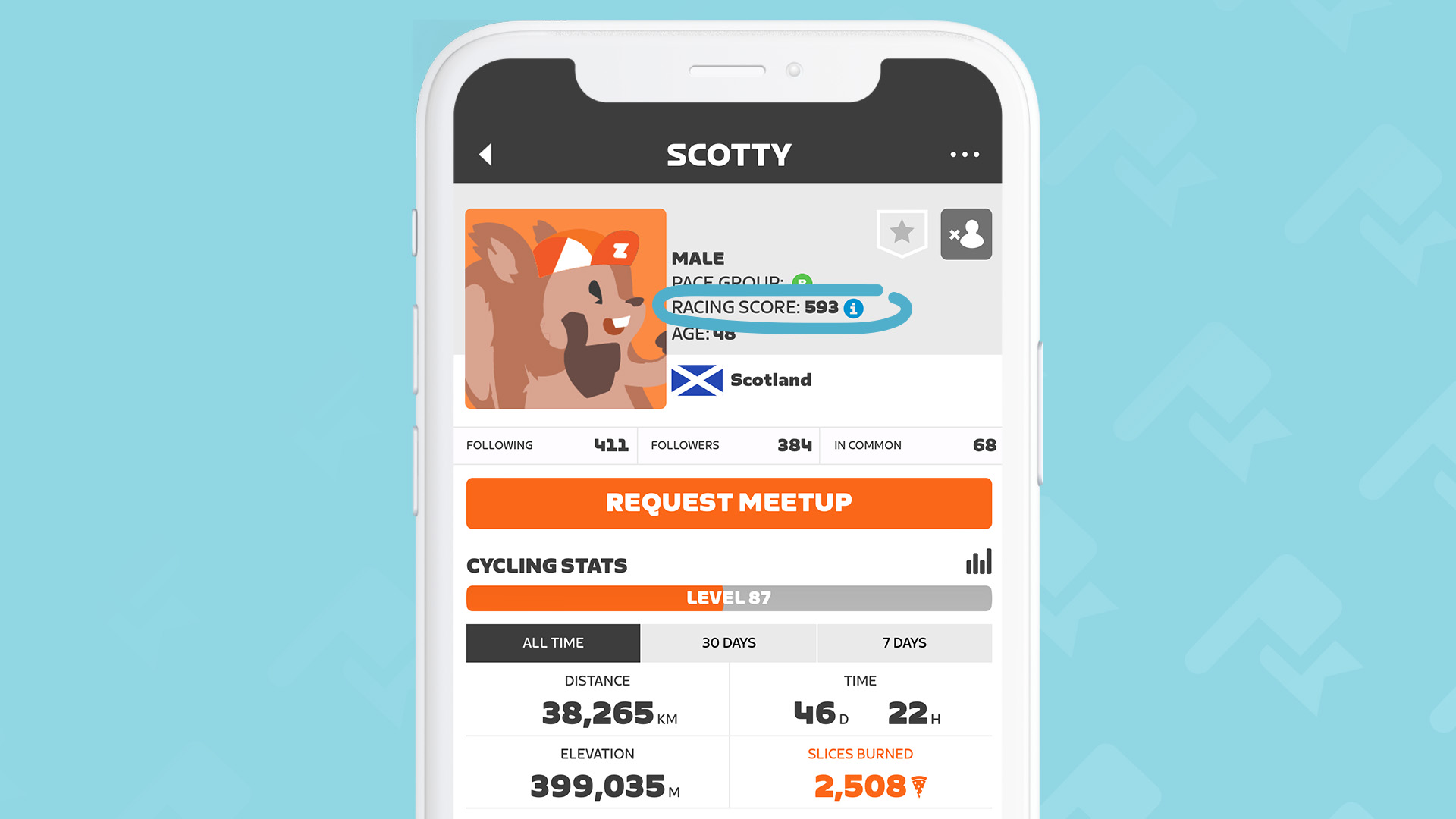Zwift has introduced a major overhaul to its virtual racing with the launch of the Zwift Racing Score, a new system designed to make races fairer and more competitive. The new score, ranging from 0 to 1,000, replaces the previous category system (A-D) and aims to dynamically reflect each rider's performance and fitness.
The old system relied primarily on a rider’s Functional Threshold Power (FTP) to determine their race category, whereas Zwift Racing Score factors in not just raw power but also a rider’s race-specific skills and strategy. Riders are assigned an initial score based on their best 30-second and 10-minute power outputs (CP30s and CP600s) from the past 90 days, which Zwift adjusts to account for differences in weight and overall fitness levels.
Once a baseline score is set, it evolves as racers participate in races. The score increases or decreases based on performance, taking into account factors like race field size (the more racers, the more points on offer), finishing position, and the strength of competitors. According to Zwift, the aim is to reward not just brute strength but smart racing tactics as well.
The score can, however, also change based on activities outside of Zwift racing. Zwift said, "If, for example, new power bests are established during a free ride or workout this can cause your Racing Score to increase, and it may be higher than your last Race Result. Your Racing Score can also decrease over time as older results are no longer included, resulting in a lower Racing Score than your most recent Race Result."
It's also worth noting that the Racing Score is based on race results in ranked races - the A-D categories will remain in place for pace-groups and non-racing group activities.
New categories
The Zwift Racing Score introduces five standard categories, compared to the previous system's four, which are based on a rider's score:
- 690-1000
- 520-690
- 350-520
- 180-350
- 1-180
Race organisers also have the flexibility to create custom categories beyond these five, allowing for even more tailored competitions. Zwift said this flexibility, combined with the new scoring system, should make races more competitive by grouping riders more effectively according to their current abilities.

Real-time progress and category enforcement
Zwift riders can view their Racing Score in their Zwift profile, which is available on the Zwift Companion app, Zwift.com, and ZwiftPower. The score updates after each race, and participants can track how their score changes, as well as see other riders' scores, allowing for greater insight into how individual races affect everyone's overall rankings.
To prevent category mismatches, Zwift Racing Score works alongside the platform’s Category Enforcement system, which blocks riders from joining races that are too easy for them. Racers can only enter fields that align with their current score, ensuring a more level playing field. This is expected to prevent overpowered riders from dominating lower-level races, a common complaint under the old system.
The new scoring system is open now, and will be featured in all major Zwift events, including the Zwift Academy Makeup Races later this month.
Did we do a good job with this story?



